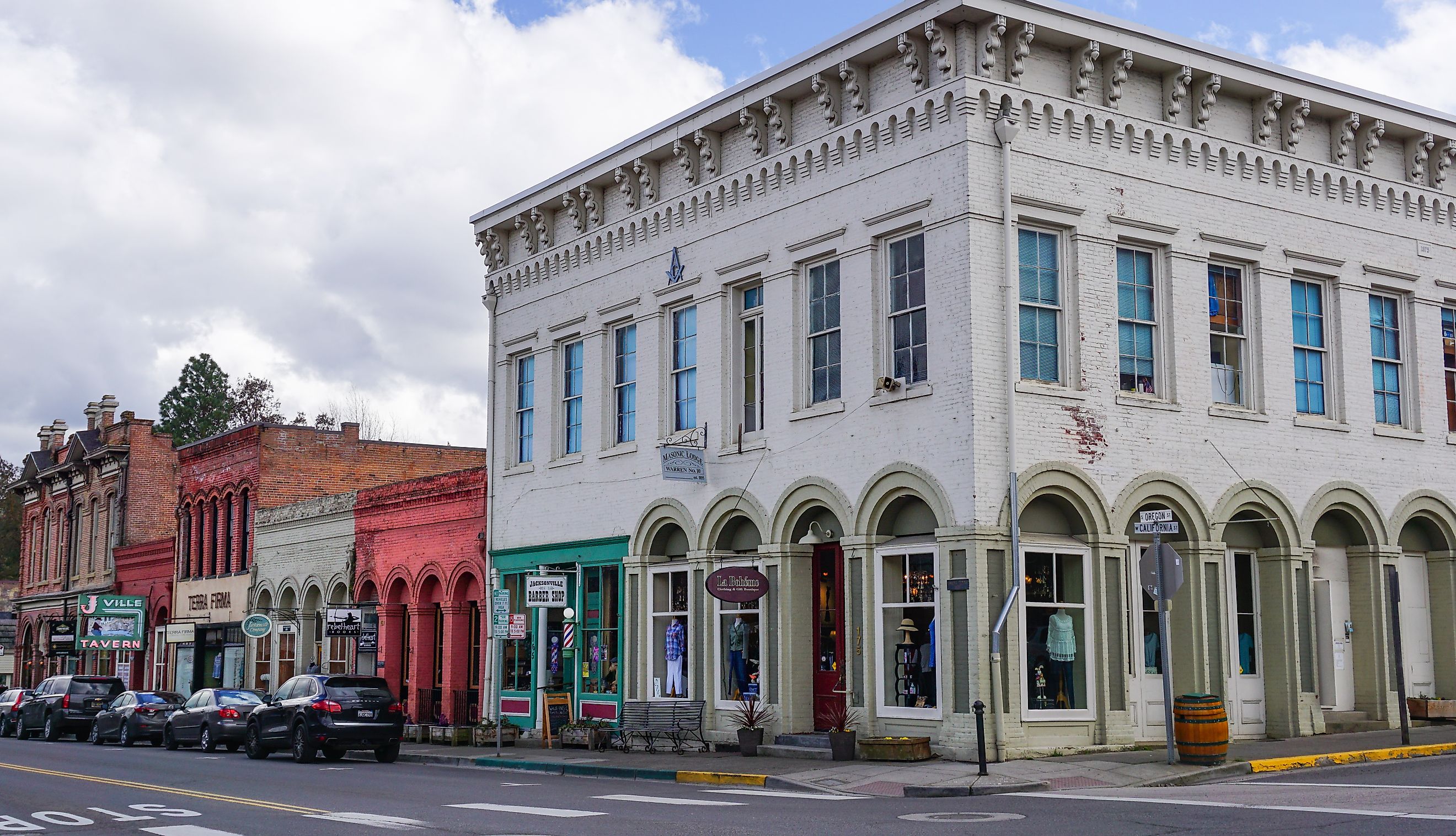
10 Oldest Founded Small Towns to Visit in Oregon
Sitting in the Pacific Northwest of the United States, Oregon was the 33rd state to join the Union in 1859. Although this certainly makes it a latecomer compared to the Midwestern states, Oregon is no slacker when it comes to historic towns. Many of these towns were founded in gold rush eras that predate Oregon's establishment as a state. In these towns, you'll discover ancient Native American art on canyon walls, crystal blue lakes, historic sites on the Oregon Trail, and some of the best waterfalls in the world. Here are 10 of the oldest-founded towns in Oregon that you can visit today.
Sisters
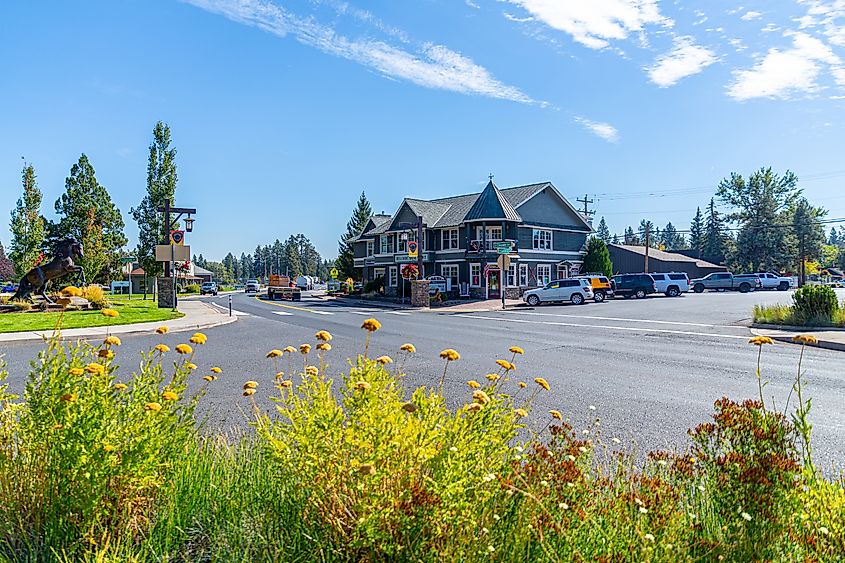
The town of Sisters in central Oregon was previously the spot of the military Camp Polk in 1866 before it was settled in 1870 by Samuel M. Hindman. Today, this picturesque town is a paradise for those who like to get away in nature. There are several state forests in the area, including Deschutes National Forest and Smith Rock State Park, a major spot for climbers of all skills to test their abilities. The larger Sisters County area also has Suttle Lake and the Metolius River, which offer great hiking trails. In fact, you can even tackle these trails atop a horse or llama. Within the town itself, you'll find all sorts of cute shops ranging from Beacham's Clock Company to Common Threads to Gypsy Wind Clothing.
Klamath Falls
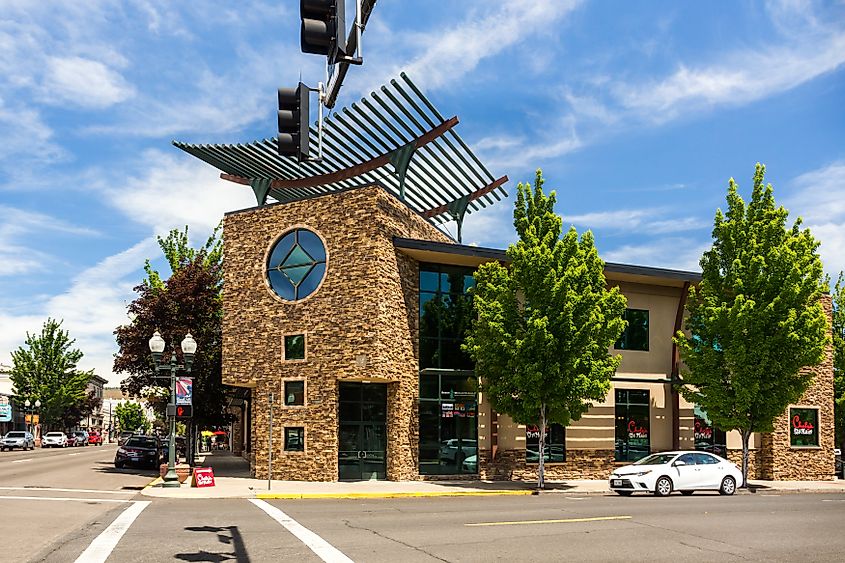
The Oregon Trail brought many visitors west in the early 1800s. One such city in southern Oregon was Klamath Falls, first settled in 1867 under the name Linkville before the name was changed in 1893. The city gained a huge boost in revenue from the Southern Pacific Railroad in the early 1900s, although the Great Depression did a lot of damage to its economy. Today, it is known as "Oregon's City of Sunshine" due to the many pretty locales to visit in town, such as Crater Lake, a crystal blue body of water with an island sitting on it. Visitors will also enjoy the OC and E Woods Line State Trail, which runs on the site of an old rail line. The larger Klamath Basin is a great spot to go birdwatching as well. In Klamath, you'll have a chance to dive into the history of the region at one of the many museums, including the Klamath County Museum and Favell Museum, which has some of the largest collections of Native American art.
Oregon City
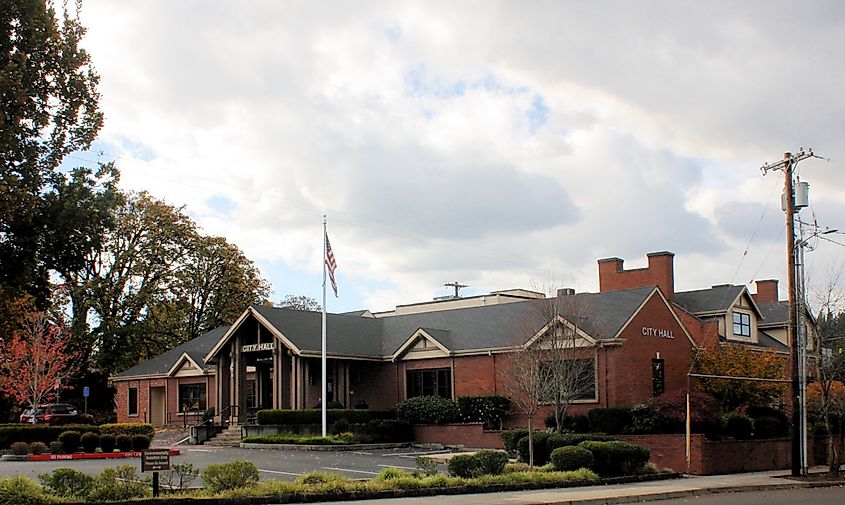
City Hall in Oregon City, Oregon. By Pete Forsyth, CC BY 4.0, Wikimedia Commons
Oregon City is the oldest settlement in the Willamette Valley and the former capital of Oregon Territory. It was first founded in 1829 and was famous for being the terminus of the Oregon Trail. Fur traders, missionaries, and other immigrants traveled here and made it their home. Today, this small town is only 13 miles south of Portland and makes for a great road trip. There are several unique attractions in town, such as the Oregon City Municipal Elevator, which takes you up 130 feet to get a panoramic view of the town. Oregon City also has several historic houses that are open for visitors, including the Barclay House, Rose Farm, and McLoughlin House. You can learn more about Oregon Territory at the Museum of the Oregon Territory, and you catch one of the most breathtaking views in the area by hiking to Willamette Falls.
Astoria
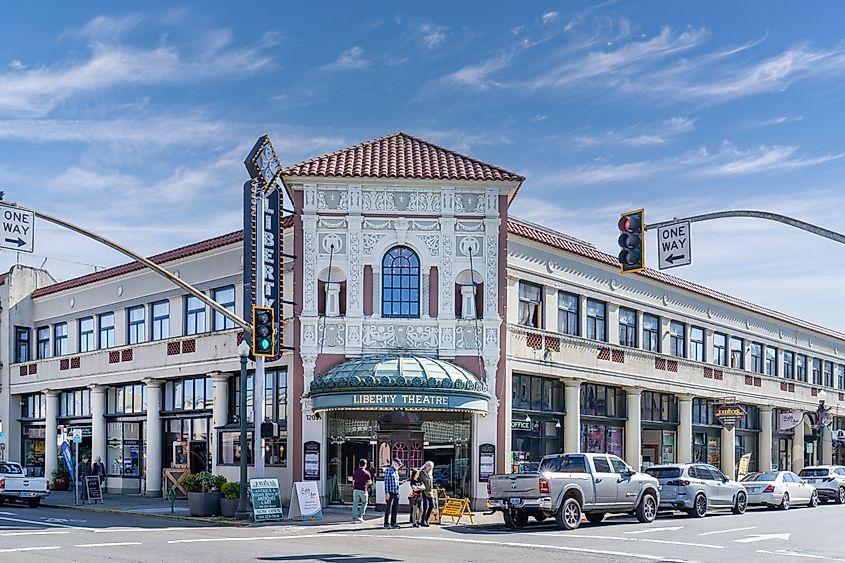
Astoria is the oldest town not just in Oregon but west of the Rocky Mountains. It was first founded in 1811 by John Jacob Astor, who set fur traders to set up Fort Astoria. The area itself is a beautiful place, with three rivers, Victorian houses, and more. History buffs will have plenty to discover here in Historia in Astoria's Columbia River Maritime Museum. Astoria was also one of the stops on the Lewis and Clark expedition, and you can follow in their footsteps with the Fort to Sea trail. Hikers will have lots of trails to explore in Astoria, from the Lewis & Clark National and State Historic Park and Fort Stevens State Park, the latter of which has Pacific beaches and lakes.
Jacksonville
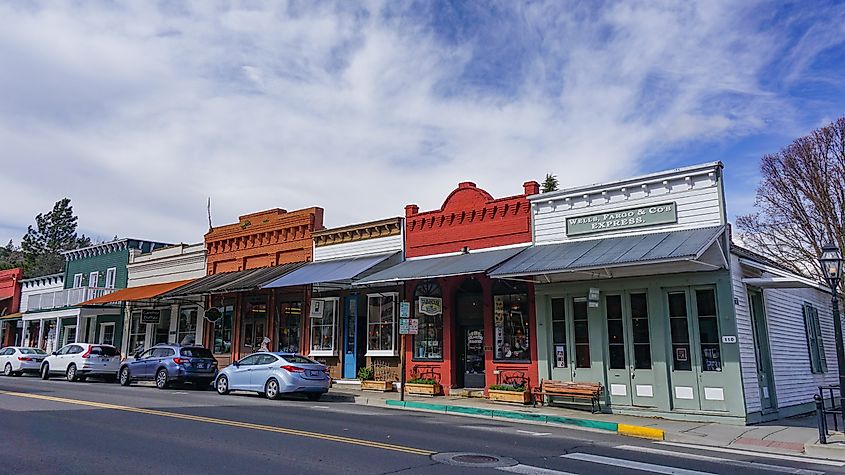
Jacksonville has had a wild past that first began when gold was discovered at nearby Rich Gulch in 1851, which led to a flood of people coming to the town. It was initially called Table Rock City, and it became the largest town in the entirety of Oregon Territory. However, like so many other towns, when the railroad bypassed it, its size began to dwindle. Despite this, Jacksonville is still an intriguing place to poke around. For example, at the 1873 Beekman House Museum, you'll see authentic 19th-century artifacts from the wealthiest family in Jacksonville. You can also visit the Beekman Bank Museum, which saw more than $40 million in gold during the 1800s. Beyond gold, the area is famous for its wine, which you can taste at the Applegate Vines Wine Tours. While you're in the area, you'll definitely want to explore Forest Park, which, despite its humble name, has 40 miles of picturesque hiking trails just a mile outside of town.
Brownsville
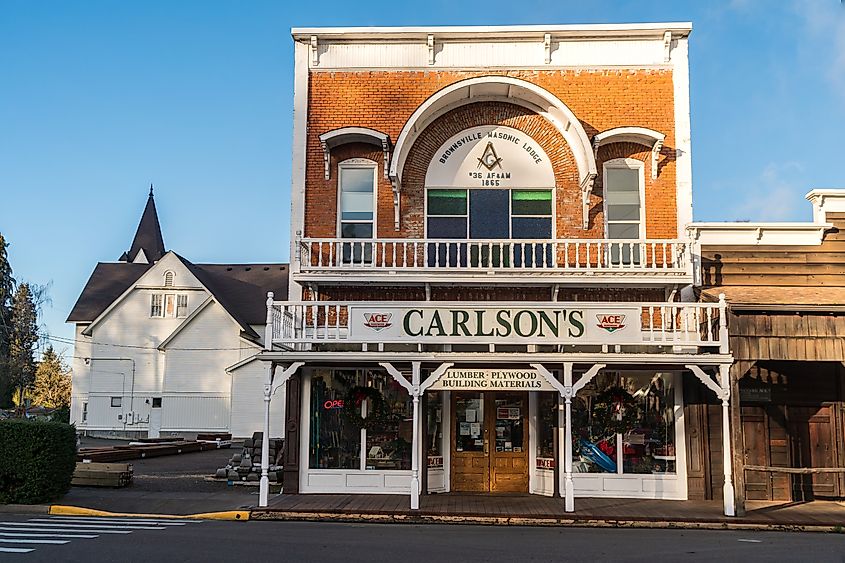
Brownsville was founded in 1846 by a group of families on the Oregon Trail, who set down roots due to its location on the valley of the Calapooia River. The city was previously split into North Brownsville and Amelia on opposite sides of the river before being incorporated into a single town in 1895. At the Linn County Historical Museum, you'll learn all about early pioneers and Native Americans and see a historic train station. Brownsville prides itself on its art, which you can see at The Living Rock Studios, a quirky building with artwork and beautiful rocks. You'll also want to visit The Moyer House, an 1881 mansion with paintings and furnishings. Don't forget to explore Pioneer Park at the Calapooia River to look at the local flora and fauna.
Ashland
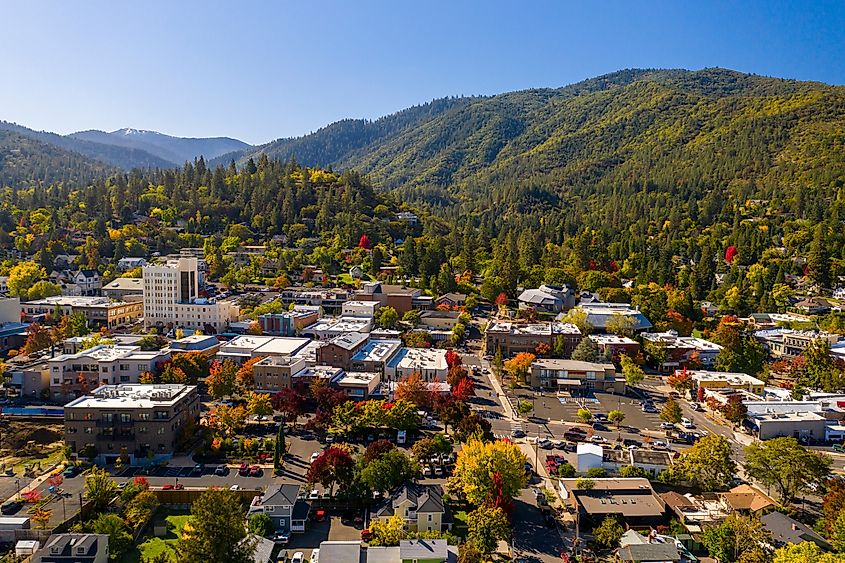
Located in the foothills of the Siskiyou and the Cascade Mountains, Ashland was first settled in the 1850s on the site of a Shasta Native American village. Over time, the railroad town Medford surpassed it and drew off some of its residents. Today, the town is both a cultural and natural hub within Southern Oregon. Its most famous attraction is the Oregon Shakespeare Festival, which puts on outdoor performances from March to October. Within Ashland, you can see cherry blossoms within Lithia Park or go further to the Ashland Creek Watershed, which has many trails through creeks and woodlands as well as a path up to Mt. Ashland itself, which you can hike or bike on or go skiing in winter months.
Dayville
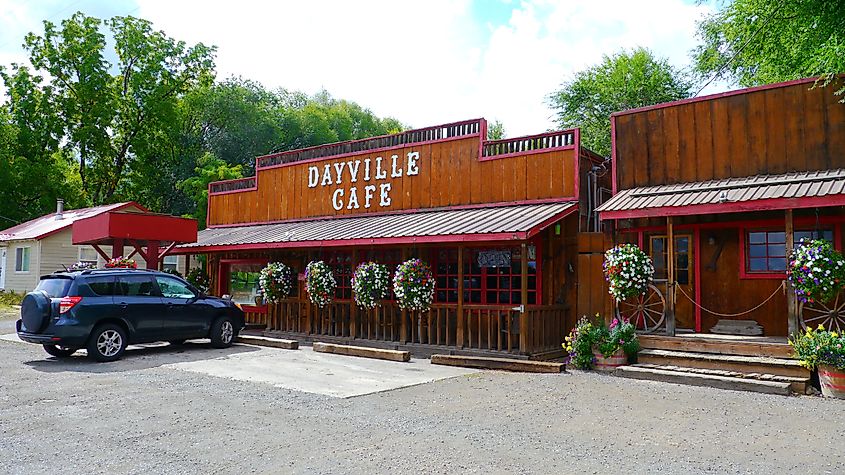
Within eastern Oregon, you'll find the hidden gem of Dayville. It began as a wagon road before being incorporated as a town in 1913. It is situated by the Painted Hills, not far from the John Day Fossil Beds National Monument. Within these beds, you will find 40,000 fossils of prehistoric elephants, camels, and sabertooth tigers. Dayville sits within the Sheep Rock Unit of the monument and houses many fossils within the Thomas Condon Paleontology Center, with several interactive exhibits and fossils to check out. Within the town, you can visit the James Cant Ranch Historical Museum, or if you go a few miles out, you can see Picture Gorge, which has Native American paintings drawn on the canyon walls.
Silverton
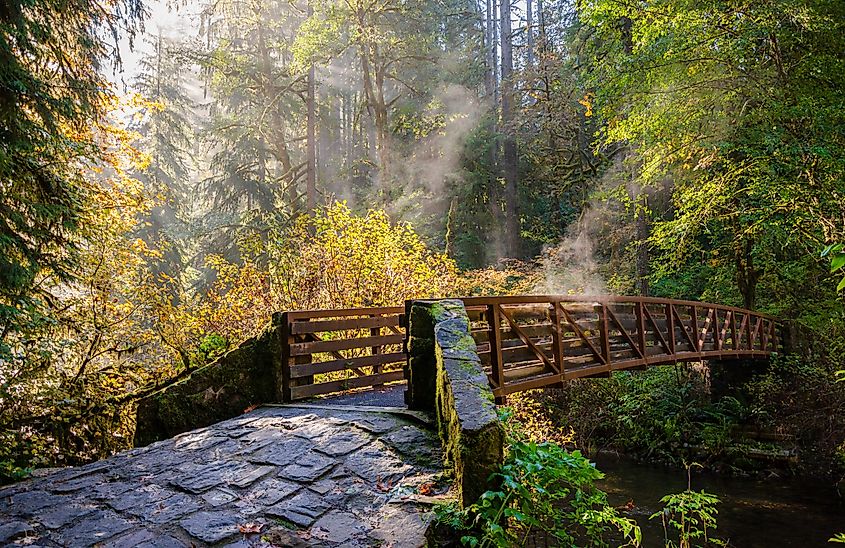
A trail at Silver Falls State Park in Silverton, Oregon.
Silverton was first established in 1846 when James Smith and John Barger set up a sawmill in the area, with the city itself being incorporated in 1885. Silverton is close to Silver Falls State Park, which is widely considered the best park in Oregon. At the park, you'll see the 177-foot South Falls, which is part of the larger Trail of Ten Falls, which is sure to enchant any hiker. Within Silverton, you'll also find a scenic garden called The Oregon Garden, an 80-acre botanical space. Within the downtown area, there are several cute shops that sell local goods and antiques, like The Red Bench, Mayberry's, and the Silverton Antique Mall. You can also grab a cup of coffee at Silverton Coffee Station, the site of a former gas station.
The Dalles
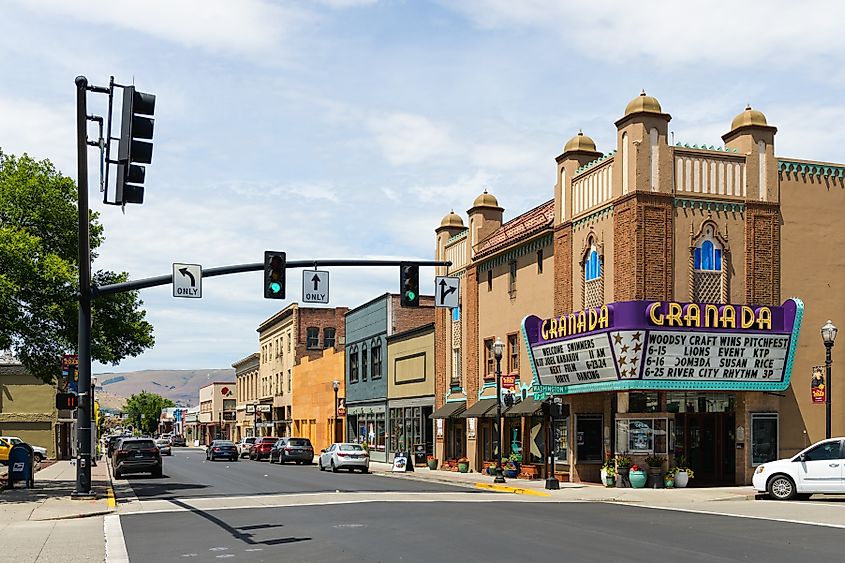
The Dalles has a history going back more than 10,000 years to Native American settlement. Europeans first came to the area in the 1830s. Its name comes from a fur trader word that means a place where a river goes through narrow, rocky channels, in this case, the Columbia River. Today, the Dalles has both natural and manmade sites, including the Dalles Lock and Dam Visitor Center, the Columbia Gorge Discover Center & Museum, the Fort Dalles Museum, and the National Neon Sign Museum. The Dalles also houses the Wasco County Courthouse, the first territorial courthouse west of the Rockies. Speaking of the gorge, The Dalles is the eastern gateway to the Columbia Gorge National Scenic Area, a river canyon that is up to 4,000 feet deep and runs along the Cascade Mountain Range.
Why Oregon’s Oldest Towns Deserve a Visit
If it isn't evident by now, Oregon is a beautiful place to visit. While the Grand Canyon in Arizona is more well-known, Oregon has several canyons and gorges that you can see in several of these small towns. Even if you aren't an outdoorsy person, you'll have several other places to explore, from museums of natural history, local history, neon signs, and more. While these towns are old, that doesn’t mean they are boring, and by visiting them today, you'll see why firsthand.











